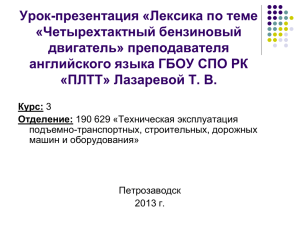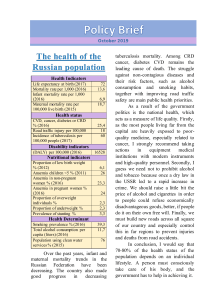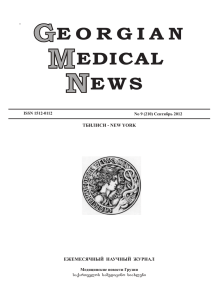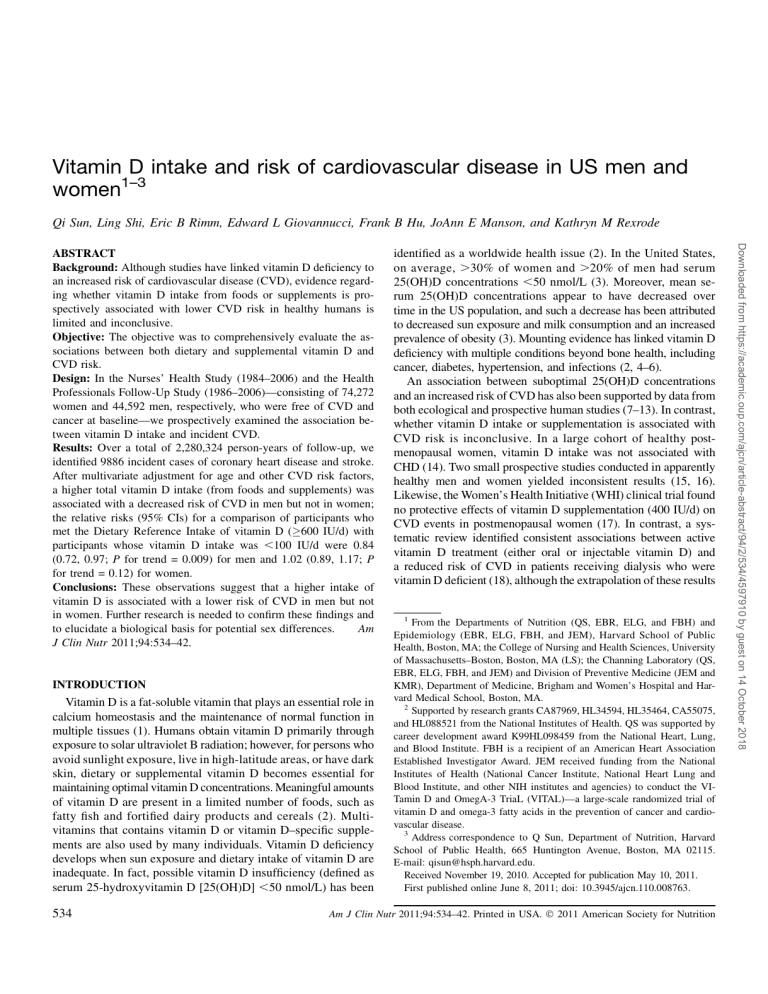
Vitamin D intake and risk of cardiovascular disease in US men and women1–3 Qi Sun, Ling Shi, Eric B Rimm, Edward L Giovannucci, Frank B Hu, JoAnn E Manson, and Kathryn M Rexrode INTRODUCTION Vitamin D is a fat-soluble vitamin that plays an essential role in calcium homeostasis and the maintenance of normal function in multiple tissues (1). Humans obtain vitamin D primarily through exposure to solar ultraviolet B radiation; however, for persons who avoid sunlight exposure, live in high-latitude areas, or have dark skin, dietary or supplemental vitamin D becomes essential for maintaining optimal vitamin D concentrations. Meaningful amounts of vitamin D are present in a limited number of foods, such as fatty fish and fortified dairy products and cereals (2). Multivitamins that contains vitamin D or vitamin D–specific supplements are also used by many individuals. Vitamin D deficiency develops when sun exposure and dietary intake of vitamin D are inadequate. In fact, possible vitamin D insufficiency (defined as serum 25-hydroxyvitamin D [25(OH)D] ,50 nmol/L) has been 534 identified as a worldwide health issue (2). In the United States, on average, .30% of women and .20% of men had serum 25(OH)D concentrations ,50 nmol/L (3). Moreover, mean serum 25(OH)D concentrations appear to have decreased over time in the US population, and such a decrease has been attributed to decreased sun exposure and milk consumption and an increased prevalence of obesity (3). Mounting evidence has linked vitamin D deficiency with multiple conditions beyond bone health, including cancer, diabetes, hypertension, and infections (2, 4–6). An association between suboptimal 25(OH)D concentrations and an increased risk of CVD has also been supported by data from both ecological and prospective human studies (7–13). In contrast, whether vitamin D intake or supplementation is associated with CVD risk is inconclusive. In a large cohort of healthy postmenopausal women, vitamin D intake was not associated with CHD (14). Two small prospective studies conducted in apparently healthy men and women yielded inconsistent results (15, 16). Likewise, the Women’s Health Initiative (WHI) clinical trial found no protective effects of vitamin D supplementation (400 IU/d) on CVD events in postmenopausal women (17). In contrast, a systematic review identified consistent associations between active vitamin D treatment (either oral or injectable vitamin D) and a reduced risk of CVD in patients receiving dialysis who were vitamin D deficient (18), although the extrapolation of these results 1 From the Departments of Nutrition (QS, EBR, ELG, and FBH) and Epidemiology (EBR, ELG, FBH, and JEM), Harvard School of Public Health, Boston, MA; the College of Nursing and Health Sciences, University of Massachusetts–Boston, Boston, MA (LS); the Channing Laboratory (QS, EBR, ELG, FBH, and JEM) and Division of Preventive Medicine (JEM and KMR), Department of Medicine, Brigham and Women’s Hospital and Harvard Medical School, Boston, MA. 2 Supported by research grants CA87969, HL34594, HL35464, CA55075, and HL088521 from the National Institutes of Health. QS was supported by career development award K99HL098459 from the National Heart, Lung, and Blood Institute. FBH is a recipient of an American Heart Association Established Investigator Award. JEM received funding from the National Institutes of Health (National Cancer Institute, National Heart Lung and Blood Institute, and other NIH institutes and agencies) to conduct the VITamin D and OmegA-3 TriaL (VITAL)—a large-scale randomized trial of vitamin D and omega-3 fatty acids in the prevention of cancer and cardiovascular disease. 3 Address correspondence to Q Sun, Department of Nutrition, Harvard School of Public Health, 665 Huntington Avenue, Boston, MA 02115. E-mail: [email protected]. Received November 19, 2010. Accepted for publication May 10, 2011. First published online June 8, 2011; doi: 10.3945/ajcn.110.008763. Am J Clin Nutr 2011;94:534–42. Printed in USA. Ó 2011 American Society for Nutrition Downloaded from https://academic.oup.com/ajcn/article-abstract/94/2/534/4597910 by guest on 14 October 2018 ABSTRACT Background: Although studies have linked vitamin D deficiency to an increased risk of cardiovascular disease (CVD), evidence regarding whether vitamin D intake from foods or supplements is prospectively associated with lower CVD risk in healthy humans is limited and inconclusive. Objective: The objective was to comprehensively evaluate the associations between both dietary and supplemental vitamin D and CVD risk. Design: In the Nurses’ Health Study (1984–2006) and the Health Professionals Follow-Up Study (1986–2006)—consisting of 74,272 women and 44,592 men, respectively, who were free of CVD and cancer at baseline—we prospectively examined the association between vitamin D intake and incident CVD. Results: Over a total of 2,280,324 person-years of follow-up, we identified 9886 incident cases of coronary heart disease and stroke. After multivariate adjustment for age and other CVD risk factors, a higher total vitamin D intake (from foods and supplements) was associated with a decreased risk of CVD in men but not in women; the relative risks (95% CIs) for a comparison of participants who met the Dietary Reference Intake of vitamin D (600 IU/d) with participants whose vitamin D intake was ,100 IU/d were 0.84 (0.72, 0.97; P for trend = 0.009) for men and 1.02 (0.89, 1.17; P for trend = 0.12) for women. Conclusions: These observations suggest that a higher intake of vitamin D is associated with a lower risk of CVD in men but not in women. Further research is needed to confirm these findings and to elucidate a biological basis for potential sex differences. Am J Clin Nutr 2011;94:534–42. VITAMIN D INTAKE AND CARDIOVASCULAR DISEASE 535 to the general populations is questionable. Fewer studies have been conducted to prospectively examine this association in men or the dose-response relation for vitamin D intake and CVD risk. We therefore used data from 2 large prospective cohort studies of US men and women with .20 y of follow-up to comprehensively evaluate the associations between both dietary and supplemental vitamin D and CVD risk. used in our previous investigations to minimize systematic errors in dietary assessment (21). Using the current Dietary Reference Intake (DRI) of vitamin D (22) and the actual distribution of vitamin D intake in these 2 cohorts, we categorized the study participants into 5 categories: ,100, 100–199, 200–399, 400–599, and 600 IU/d, which is the current DRI of vitamin D for men and women younger than age 70 y. SUBJECTS AND METHODS Ascertainment of study outcome Study populations Assessment of vitamin D intake In 1980, a 61-item semiquantitative food-frequency questionnaire (FFQ) was sent to NHS participants to assess their usual diet in the previous year. In 1984 and every 2–4 y thereafter, an expanded FFQ containing 116–130 food items was sent to the NHS participants to update their usual diet. Similarly, in the HPFS, dietary information was assessed quadrennially by using the expanded FFQs since 1986. To derive vitamin D intake from responses to the FFQs, we multiplied the frequency of consumption of each food by the vitamin D composition in a prespecified amount of that food and then summed up the vitamin D intake from all food items. When estimating the total vitamin D intake, vitamin D–containing supplement use (either vitamin D–specific supplements or multivitamins containing vitamin D) was taken into account as well. In the NHS, vitamin D supplement use was assessed since 1984, whereas in the HPFS, vitamin D supplementation was examined since baseline in 1986. Intakes of calcium and other nutrients were assessed by using the same approach. In a validation study in NHS participants, moderate-tostrong correlations were documented between the FFQ and diet record assessments of primary food sources of dietary vitamin D, such as skimmed milk (r = 0.81), whole milk (r = 0.62), darkmeat fish (r = 0.66), and cold cereal (r = 0.79) (19). In the HPFS, the corresponding correlation coefficients were 0.88, 0.67, 0.58, and 0.86, respectively (20). In the current analysis, we examined vitamin D intakes from food sources and from supplements. Total vitamin D intake included both dietary and supplemental vitamin D. We derived cumulative averages of food and nutrient intakes throughout the entire follow-up period (from baseline to the time of censoring events) to better represent the long-term diet. In addition, we stopped updating diet when participants first reported having a diagnosis of cancer, because cancers might influence subsequent diet. For these participants, we carried forward the cumulative averages of dietary intake before the occurrence of cancers to represent diet for later follow-up. All of these approaches were Exclusion criteria In the current analysis, we excluded NHS and HPFS participants who had diagnoses of CVD at baseline (1984 for NHS and 1986 for HPFS). We also excluded participants with existing cancers at Downloaded from https://academic.oup.com/ajcn/article-abstract/94/2/534/4597910 by guest on 14 October 2018 The Nurses’ Health Study (NHS) was established in 1976 when 121,700 female registered nurses were enrolled from 11 states and completed a comprehensive questionnaire inquiring about lifestyle practices and medical history that were updated biennially with the use of similar but expanded follow-up questionnaires since baseline. The Health Professionals Follow-Up Study (HPFS) consisted of 51,529 US male health professionals who were enrolled in 1986. At baseline and thereafter, information on lifestyle and medical history was obtained and updated every 2 y. In both cohorts, the response rate was .94%. In the current analysis, CVD outcomes were defined as CHD (nonfatal myocardial infarction or fatal CHD) and stroke (nonfatal or fatal). For participants who reported having newly diagnosed CHD or stroke on the biennial questionnaires, we requested permission to access their medical records for the purpose of confirmation. Study physicians who were blinded to the participants’ exposure status reviewed the medical records. To confirm nonfatal myocardial infarction, we used the World Health Organization criteria, which require typical symptoms plus either diagnostic electrocardiographic findings or elevated cardiac enzyme concentrations. To confirm nonfatal stroke, the study physicians reviewed the results of computed tomography or magnetic resonance imaging, and a stroke diagnosis was confirmed if the medical records showed a neurologic deficit with sudden or rapid onset that persisted for .24 h or until death in accordance with the criteria of the National Survey of Stroke. Cerebrovascular diseases caused by infection, trauma, or malignancy or silent strokes were excluded. Strokes were classified as ischemic (thrombotic or embolic), hemorrhagic (subarachnoid or intraparenchymal), or of undetermined subtype. CHD and stroke events for which confirmatory information was obtained by interview or letter but no medical records were available were designated as “probable.” Deaths were identified by reports from next of kin, from postal authorities, or by searching the National Death Index. CHD and stroke deaths were classified by examining autopsy reports, hospital records, or death certificates. Fatal CHD was defined as International Classification of Diseases, ninth revision (ICD-9; http://www.cdc.gov/nchs/icd/icd9cm.htm), codes 410–412 and was considered confirmed if fatal CHD was confirmed via medical records or autopsy reports or if CHD was listed as the cause of death on the death certificate and there was prior evidence of CHD in the medical records. We designated as probable those cases in which CHD was the underlying cause on the death certificates but no prior knowledge of CHD was indicated and medical records concerning the death were unavailable. Similarly, we used ICD-9 codes 430–434 to define fatal stroke and followed the same procedures to classify confirmed or probable fatal stroke cases. Because the exclusion of probable CVD events did not alter the results, we included both confirmed and probable CHD and strokes in this analysis to maximize statistical power. Disconfirmed CHD and stroke cases were censored in the analysis (n = 1195 for the NHS and 1489 for the HPFS). 536 SUN ET AL baseline, because these individual likely change their usual diet substantially after diagnosis, which might introduce bias to the self-report of dietary vitamin D. In addition, we excluded participants who had missing baseline dietary or supplemental vitamin D levels from the analysis. After these exclusions, data from 74,272 of 81,757 NHS participants and 44,592 of 49,934 HPFS participants were available for the analysis. The study was approved by the Human Research Committee of Brigham and Women’s Hospital and the Human Subjects Committee Review Board of Harvard School of Public Health. The completion of the self-administered questionnaire was considered to imply informed consent. Each participant’s person-years of follow-up were counted from the date of return of the baseline FFQ to the date of death, the date of diagnosis of CVD, or the end of follow-up (30 June 2006 for the NHS or 31 January 2006 for the HPFS), whichever came first. The relative risks (RRs) or hazard ratios were estimated by using Cox proportional hazard regression. To determine covariates to be controlled for in multivariate analyses, we fitted several models ranging from an age-adjusted model to the most fully adjusted model (see Supplementary Table 1 under “Supplemental data” in the online issue). Subsequently, we used both Akaike information criterion and change of the RRs (.10%) (23) for vitamin D intake categories in each model in comparison with the age-adjusted model to choose an optimal multivariate-adjusted model that had both reasonable goodness of fit and maximal change of associations. The full list of potential covariates that we considered were race (NHS: white, African American, Hispanic, and Asian; HPFS: white, African American, and Asian); body mass index (BMI; in kg/m2: based on self-reported height and weight: ,21.0, 21.0–22.9, 23.0–24.9, 25.0–26.9, 27.0–29.9, 30.0–32.9, 33–34.9, or 35); family history of heart disease (yes or no); smoking (never smoked, past smoker, current smoker of 1–14 cigarettes/d, 15–24 cigarettes/d, or 25 cigarettes/d); alcohol intake (0, 0.1–4.9, 5.0– 9.9, 10.0–14.9, or 15 g/d); menopausal status (yes or no; NHS only); postmenopausal hormone use (never user, past user, or current user; NHS only); physical activity (quintiles); regular sun exposure (NHS: none, sun exposure without protection, or sun exposure with protection; HPFS: none, sun exposure without protection, sun exposure with 50% protection, or sun exposure with .50% protection); aspirin use (NHS: ,1, 1–2, 3–6, 7–14, or 15 tablet/wk; HPFS: yes or no); latitude (southern or northern states); history of hypertension, high cholesterol, or diabetes; dietary factors, including total energy intake (kcal/d), quintiles of glycemic load, trans fat intake (% of total energy), ratio of polyunsaturated to saturated fat, and dietary fiber intake (g/d); and use of loop diuretics, thiazide diuretics, steroids, or cholesterollowering drugs (including statins). Using the aforementioned algorithm, we determined a final model that was adjusted for age, smoking status, physical activity, alcohol use, BMI, family history of myocardial infarction, dietary intake of fiber and trans fat, ratio of polyunsaturated to saturated fat, glycemic load, and history of hypertension, high cholesterol, or diabetes. In addition, when we modeled the association for dietary vitamin D, supplemental vitamin D was adjusted and vice versa to control for confounding. RESULTS During 22 y of follow-up, we identified 4857 CVD cases in the NHS; during 20 y of follow-up in the HPFS, we identified 5029 CVD cases. The baseline characteristics of the NHS and HPFS participants by total vitamin D intakes are shown in Table 1. In comparison with the NHS participants, HPFS participants had higher vitamin D intakes in each category. Throughout the entire follow-up period, there was only a small proportion of personyears during which total vitamin D intakes exceeded 1000 IU/d: for 1.0% of women and 2.8% of men. A higher vitamin D intake was correlated with older age, increased physical activity levels, decreased use of tobacco, and increased use of aspirin and multivitamins in both cohorts. In addition, a higher vitamin D intake was correlated with an increased use of hormone replacement therapy in women, whereas men who had higher vitamin D intakes were more likely to have a history of diabetes. With respect to dietary factors, total vitamin D was highly correlated with calcium (NHS: r = 0.55; HPFS: r = 0.52) and retinol (NHS: r = 0.72; HPFS: r = 0.69) intakes because the primary food sources are the same (dairy products) for these nutrients. In age-adjusted analyses, total vitamin D, especially vitamin D from supplements, was inversely associated with CVD risk in both cohorts (Table 2). After adjustment for lifestyle and dietary covariates, the association was markedly attenuated in the NHS: the multivariate RR (95% CI) of CVD for a comparison of an intake 600 IU/d with an intake of ,100 IU/d was 1.02 (0.89, 1.17; P for trend = 0.12). In contrast, although the age-adjusted association was also somewhat attenuated in the HPFS, a significant inverse association remained in the multivariate analysis, with an RR (95% CI) of 0.84 (0.72, 0.97; P for trend = 0.009). The pooled RR in the random-effects models (95% CI) of CVD for a comparison of 600 IU/d with ,100 IU/d was 0.93 (0.76, 1.13; P for trend = 0.85). The RRs (95% CI) for a comparison of 600 IU/d with ,100 IU total vitamin D/d were 1.05 (0.87, 1.26; P for trend = 0.64) for CHD and 0.96 (0.79, 1.18; P for trend = 0.12) for stroke in the NHS. In the HPFS, the corresponding RRs Downloaded from https://academic.oup.com/ajcn/article-abstract/94/2/534/4597910 by guest on 14 October 2018 Statistical analysis We constructed interaction terms between vitamin D intakes and calendar year to formally test the proportional hazard assumption of Cox regressions and used likelihood ratio tests to assess the significance of these interaction terms. P values for the interaction terms were 0.48 in the NHS and 0.87 in the HPFS for total vitamin D intake, indicating that the proportional hazards assumption was unlikely violated. We used the same methods to examine potential interactions between several selected CVD risk factors and total vitamin D intake. In addition, we used restricted cubic spline regressions with 4 knots to examine doseresponse relations between vitamin D intake and risk of CVD (24). Tests for nonlinearity used the likelihood ratio test, comparing the model with only the linear term to the model with the linear and the cubic spline terms. Tests for trend were conducted by assigning the median value to each category and modeling this value as a continuous variable. We used random-effects models to summarize the RRs of the NHS and HPFS. P values for heterogeneity were calculated by using the Cochran Q test (25). All P values were 2-sided, and 95% CIs were calculated for RRs. Data were analyzed with the Statistical Analysis Systems software package (version 9.1; SAS Institute Inc, Cary, NC). 537 VITAMIN D INTAKE AND CARDIOVASCULAR DISEASE TABLE 1 Baseline characteristics by categories of total vitamin D intake in the Nurses’ Health Study (NHS) and the Health Professionals Follow-Up Study (HPFS)1 Total vitamin D intake Characteristics 1 100–199 IU/d 200–399 IU/d 400–599 IU/d 600 IU/d 9514 71.3 6 10.82 71.0 6 10.8 0.3 6 2.0 20,576 150.9 6 15.9 148.2 6 17.2 2.0 6 6.3 21,154 284.7 6 33.3 250.0 6 44.1 34.7 6 44.1 13,298 502.2 6 32.3 228.8 6 81.4 273.4 6 91.5 9730 809.2 6 127.4 316.5 6 93.0 492.7 6 145.1 49.3 6 0.1 97.1 19.6 83.4 12.6 6 12.7 24.9 6 2.6 30.6 45.9 20.1 21.6 7.6 2.3 19.2 39.7 5.7 49.7 6 0.1 97.7 19.0 84.7 12.7 6 10.8 25.1 6 2.6 26.3 45.5 22.2 21.1 7.5 2.6 19.4 42.7 10.5 50.1 6 0.1 97.8 18.1 86.6 14.0 6 11.7 25.2 6 2.7 22.3 45.4 22.5 20.5 7.8 3.1 19.3 44.6 26.5 50.7 6 0.1 98.1 21.1 85.5 15.4 6 12.4 24.8 6 2.6 21.9 45.9 28.6 21.0 8.0 2.9 19.1 48.0 76.4 51.5 6 0.1 98.2 22.5 85.6 17.4 6 14.8 24.7 6 2.6 20.3 46.9 30.3 21.7 9.7 3.4 19.1 48.8 92.5 1343 1.9 0.56 7.6 3.6 101.3 642 1833 6 6 6 6 6 6 6 6 229 0.3 0.11 6.8 1.1 13.1 195 1657 1651 2.0 0.55 7.1 4.0 99.7 736 2296 6 6 6 6 6 6 6 6 261 0.3 0.10 6.3 1.2 11.0 177 1464 1900 1.9 0.54 6.5 4.3 98.5 899 3322 6 6 6 6 6 6 6 6 290 0.3 0.09 5.8 1.3 10.0 197 1675 1779 1.8 0.55 6.9 4.3 98.8 1019 7015 6 6 6 6 6 6 6 6 316 0.3 0.10 6.2 1.3 11.1 252 2660 1952 1.8 0.56 6.6 4.5 97.6 1191 10,467 6 6 6 6 6 6 6 6 311 0.3 0.10 6.2 1.4 10.7 276 4396 3295 70.4 6 9.9 69.5 6 10.0 0.9 6 3.3 9878 154.1 6 14.0 149.5 6 15.8 4.6 6 7.7 14,536 284.3 6 28.2 259.8 6 34.7 24.5 6 30.3 8140 501.1 6 28.6 304.9 6 82.0 196.2 6 88.4 8743 875.2 6 144.9 396.7 6 117.3 478.5 6 160.9 51.3 6 0.2 92.7 37.1 87.9 18.4 6 15.6 25.2 6 2.4 11.3 22.6 9.5 1.8 11.9 21.9 8.1 52.4 6 0.1 94.4 36.2 89.1 18.6 6 13.9 25.1 6 2.5 10.5 19.9 10.0 2.3 11.8 23.7 14.7 53.0 6 0.1 95.4 33.5 90.1 21.3 6 15.3 25.0 6 2.4 9.4 20.6 10.4 2.7 12.0 25.5 27.7 53.7 6 0.1 95.0 33.3 90.1 21.4 6 14.3 24.7 6 2.5 9.7 20.1 10.7 2.7 12.0 30.3 64.8 55.3 6 0.1 95.4 34.8 90.4 24.8 6 18.3 24.7 6 2.4 8.7 20.7 12.6 2.9 12.1 32.4 87.6 1541 1.3 0.59 11.9 4.7 124.7 619 2047 6 6 6 6 6 6 6 6 230 0.3 0.12 8.2 1.4 15.5 132 1569 1788 1.3 0.57 11.8 5.4 123.9 714 2596 6 6 6 6 6 6 6 6 270 0.3 0.10 7.7 1.6 13.1 130 1454 2068 1.3 0.56 11.2 6.0 124.1 864 3514 6 6 6 6 6 6 6 6 297 0.2 0.09 7.1 1.8 12.0 164 1620 2068 1.2 0.57 11.5 6.0 123.9 997 6695 6 6 6 6 6 6 6 6 323 0.3 0.11 7.6 1.9 12.6 209 2585 2200 1.2 0.59 10.9 6.5 124.0 1175 12,157 6 6 6 6 6 6 6 6 332 0.2 0.11 7.1 2.4 12.9 269 4893 All values are age-standardized. MET-h, metabolic equivalent task hours. Mean 6 SE (all such values). 3 Southern states include California, Florida, Texas, Georgia, North Carolina, South Carolina, Alabama, Arkansas, Louisiana, Mississippi, Indiana, Arizona, New Mexico, Oklahoma, and Puerto Rico. 4 Defined in the NHS as exposure to sunlight for 8 h/wk or in the HPFS as does not avoid sunlight when outdoors. 5 Current and past use of hormones in postmenopausal women. 2 Downloaded from https://academic.oup.com/ajcn/article-abstract/94/2/534/4597910 by guest on 14 October 2018 NHS No. of subjects Total vitamin D intake (IU/d) Dietary vitamin D intake (IU/d) Supplemental vitamin D intake (IU/d) Demographic characteristics Age (y) White (%) Living in southern states (%)3 Sun exposure in summer (%)4 Physical activity (MET-h/wk) BMI (kg/m2) Current smoker (%) Postmenopausal (%) Postmenopausal hormone use (%)5 Hypertension (%) High cholesterol (%) Diabetes (%) Family history of heart disease (%) Aspirin use (%) Multivitamin supplement user (%) Diet Total energy intake (kcal/d) trans Fat intake (% of total energy) Polyunsaturated-to-saturated fat ratio Alcohol (g/d) Cereal fiber intake (g/d) Glycemic load Calcium (mg/d) Retinol (IU/d) HPFS No. of subjects Total vitamin D intake (IU/d) Dietary vitamin D intake (IU/d) Supplemental vitamin D intake (IU/d) Demographic characteristics Age (y) White (%) Living in southern states (%)3 Sun exposure in summer (%)4 Physical activity (MET-h/wk) BMI (kg/m2) Current smoker (%) Hypertension (%) High cholesterol (%) Diabetes (%) Family history of heart disease (%) Aspirin use (%) Multivitamin supplement user (%) Diet Total energy intake (kcal/d) trans Fat intake (% of total energy) Polyunsaturated-to-saturated fat ratio Alcohol intake (g/d) Cereal fiber intake (g/d) Glycemic load Calcium intake (mg/d) Retinol intake (IU/d) ,100 IU/d 538 SUN ET AL TABLE 2 Relative risks (and 95% CIs) of cardiovascular disease by vitamin D intake categories in the Nurses’ Health Study (NHS) and the Health Professionals Follow-Up Study (HPFS) Vitamin D intake categories 1 100–199 IU/d 200–399 IU/d 400–599 IU/d 600 IU/d P for trend 77.5 (61.8, 89.6) 584 186,047 1.0 1.0 1.0 153.2 (128.7, 176.0) 1823 601,831 0.86 (0.78, 0.94) 0.93 (0.84, 1.02) 0.94 (0.86, 1.03) 265.7 (229.0, 317.4) 2098 629,293 0.86 (0.78, 0.94) 0.97 (0.88, 1.06) 1.00 (0.91, 1.10) 446.5 (419.6, 489.6) 322 87,054 0.92 (0.80, 1.06) 1.04 (0.91, 1.19) 1.07 (0.94, 1.24) 664.5 (625.3, 733.8) 30 7381 1.10 (0.76, 1.58) 1.17 (0.81, 1.68) 1.20 (0.83, 1.74) 0.59 0.13 0.04 75.9 (59.1, 88.8) 387 61,411 1.0 1.0 1.0 156.9 (132.5, 178.9) 1527 238,416 0.89 (0.79, 0.99) 0.93 (0.83, 1.04) 0.95 (0.85, 1.06) 271.9 (233.2, 322.7) 2280 359,902 0.80 (0.72, 0.89) 0.87 (0.78, 0.97) 0.90 (0.81, 1.01) 465.5 (428.4, 517.4) 656 87,750 0.88 (0.77, 0.99) 0.96 (0.85, 1.09) 1.00 (0.88, 1.14) 684.4 (632.6, 775.2) 179 21,239 0.94 (0.79, 1.12) 0.99 (0.83, 1.18) 1.03 (0.86, 1.23) 0.40 0.77 0.39 1.0 — 0.94 (0.88, 1.01) 0.93 0.95 (0.86, 1.05) 0.18 1.03 (0.94, 1.13) 0.45 1.06 (0.90, 1.24) 0.45 0.09 0.25 0 (0, 0.1) 2622 836,407 1.0 1.0 1.0 133.3 (114.2, 160.0) 764 219,069 0.93 (0.86, 1.01) 1.02 (0.94, 1.11) 1.04 (0.96, 1.13) 262.5 (209.5, 314.0) 965 289,001 0.88 (0.81, 0.94) 1.00 (0.92, 1.07) 1.02 (0.95, 1.10) 400.0 (400.0, 418.7) 434 142,031 0.85 (0.77, 0.94) 0.99 (0.92, 1.07) 1.02 (0.92, 1.13) 700.0 (600.0, 800.0) 72 25,099 0.86 (0.68, 1.09) 1.00 (0.79, 1.27) 1.03 (0.81, 1.30) ,0.0001 0.92 0.55 0 (0, 0) 3037 462,168 1.0 1.0 1.0 133.3 (114.0, 160.0) 545 80,578 0.91 (0.83, 1.00) 0.94 (0.86, 1.03) 0.95 (0.87, 1.05) 251.0 (214.0, 300.0) 746 121,202 0.80 (0.74, 0.87) 0.84 (0.78, 0.91) 0.86 (0.79, 0.93) 400.0 (400.0, 400.0) 547 79,236 0.88 (0.80, 0.96) 0.94 (0.86, 1.04) 0.96 (0.88, 1.06) 800.0 (650.0, 800.0) 154 25,534 0.80 (0.68, 0.94) 0.87 (0.74, 1.02) 0.89 (0.76, 1.05) ,0.0001 0.002 0.01 1.0 — 1.00 (0.92, 1.08) 0.18 0.94 (0.79, 1.11) 0.003 0.99 (0.92, 1.06) 0.42 0.93 (0.82, 1.07) 0.32 0.55 0.04 77.0 (61.3, 89.3) 306 99,146 1.0 1.0 1.0 154.5 (129.6, 177.3) 911 311,607 0.85 (0.74, 0.96) 0.92 (0.80, 1.04) 0.93 (0.81, 1.06) 291.3 (242.9, 342.9) 1740 547,531 0.80 (0.71, 0.90) 0.93 (0.82, 1.05) 0.96 (0.85, 1.09) 490.2 (443.2, 542.0) 1173 352,334 0.76 (0.67, 0.87) 0.94 (0.82, 1.06) 0.98 (0.86, 1.11) 706.2 (644.2, 809.1) 727 200,988 0.79 (0.69, 0.90) 0.97 (0.85, 1.11) 1.02 (0.89, 1.17) 0.003 0.54 0.12 74.9 (58.7, 88.7) 218 34,935 1.0 1.0 1.0 157.6 (132.7, 179.2) 863 135,032 0.88 (0.76, 1.03) 0.92 (0.80, 1.07) 0.94 (0.81, 1.09) 287.7 (241.2, 339.0) 1706 270,607 0.80 (0.69, 0.92) 0.87 (0.75, 1.00) 0.89 (0.78, 1.03) 493.5 (445.4, 544.2) 1191 176,091 0.78 (0.67, 0.90) 0.86 (0.75, 1.00) 0.90 (0.77, 1.04) 749.5 (660.1, 915.0) 1051 152,053 0.72 (0.62, 0.83) 0.80 (0.69, 0.93) 0.84 (0.72, 0.97) ,0.0001 0.0007 0.009 1.0 — 0.93 (0.84, 1.03) 0.92 0.93 (0.85, 1.02) 0.47 0.94 (0.85, 1.04) 0.39 0.93 (0.76, 1.13) 0.05 0.85 0.004 Values are medians; interquartile ranges in parentheses. Cox proportional hazard regression model was adjusted for smoking, physical activity, alcohol intake, BMI, family history of heart disease, menopausal status (NHS only), postmenopausal hormone use (NHS only), and history of hypertension, high cholesterol, or diabetes. 3 Based on model 1, model 2 was further adjusted for glycemic load, trans fat, the ratio of polyunsaturated to saturated fat, and dietary fiber. 4 Dietary vitamin D and supplemental vitamin D were mutually adjusted for each other. 2 Downloaded from https://academic.oup.com/ajcn/article-abstract/94/2/534/4597910 by guest on 14 October 2018 Dietary vitamin D NHS Intake (IU/d)1 No. of cases Person-years Age adjusted Model 12 Model 23,4 HPFS Intake (IU/d)1 No. of cases Person-years Age adjusted Model 12 Model 23,4 Pooled3,4 Random-effects model P for heterogeneity Supplemental vitamin D (IU/d) NHS Intake (IU/d)1 No. of cases Person-years Age adjusted Model 12 Model 23,4 HPFS Intake (IU/d)1 No. of cases Person-years Age adjusted Model 12 Model 23,4 Pooled3,4 Random-effects model P for heterogeneity Total vitamin D (IU/d) NHS Intake (IU/d)1 No. of cases Person-years Age adjusted Model 12 Model 23 HPFS Intake (IU/d)1 No. of cases Person-years Age adjusted Model 12 Model 23 Pooled3 Random-effects model P for heterogeneity ,100 IU/d VITAMIN D INTAKE AND CARDIOVASCULAR DISEASE FIGURE 1. Relative risks (and 95% CIs) of cardiovascular disease according to total vitamin D intakes in the Nurses’ Health Study (NHS) and the Health Professionals Follow-Up Study (HPFS). Participants with the lowest and highest 5% of total vitamin D intakes were excluded to minimize the potential effect of outliers. Multivariate Cox regression models were adjusted for the same covariates in model 2, Table 2. Solid lines represent the relative risks, and dashed lines represent the 95% CIs. In addition, we used logistic regression to examine the crosssectional association between dietary vitamin D intakes and the odds of possible vitamin D insufficiency, defined as 25(OH)D concentrations ,50 nmol/L. The odds ratios (95% CI) of vitamin D insufficiency for a comparison of 600 IU/d with ,100 IU/d were 0.09 (0.03, 0.29) for men and 0.34 (0.12, 0.93) for women. When we used 25(OH)D concentrations ,30 nmol/L to define vitamin D insufficiency, we found stronger associations: the corresponding odds ratios (95% CIs) were 0.05 (0.01, 0.28) for men and 0.07 (0.01, 0.79) for women. DISCUSSION In these 2 large cohorts of men and women with vitamin D intakes that were typical of US populations (27), we documented Downloaded from https://academic.oup.com/ajcn/article-abstract/94/2/534/4597910 by guest on 14 October 2018 (95% CIs) were 0.86 (0.72, 1.02; P for trend = 0.01) and 0.77 (0.57, 1.03; P for trend = 0.46), respectively. In secondary analyses, we further adjusted for intakes of calcium and retinol—nutrients that are highly correlated with vitamin D intake (data not shown). In the HPFS, such an adjustment did not abolish the significantly inverse association for vitamin D intake: The RR (95% CI) was 0.84 (0.72, 0.99; P for trend = 0.04) for a comparison of 600 IU/d with ,100 IU/d. In the NHS, the corresponding RR (95% CI) was 1.12 (0.95, 1.31). In addition, although none of the RRs for vitamin D intakes were significant in the NHS, we observed a significant trend across categories (P for trend = 0.01). Nonetheless, the 95% CIs were much wider for these RRs in the NHS after such an adjustment. To address the potential colinearity between vitamin D and these nutrients, we examined the joint effects of total vitamin D and calcium and retinol intakes; the results are shown elsewhere (see Supplementary Figures 1 and 2, respectively, under “Supplemental data” in the online issue). In the NHS, in comparison with low intakes of both vitamin D and calcium, high intakes of both nutrients were not associated with CVD risk: the RR (95% CI) was 0.98 (0.89, 1.08). Similarly, high intakes of both vitamin D and retinol were not associated with CVD risk: the RR (95% CI) was 1.03 (0.95, 1.12). In the HPFS, high intakes of both vitamin D and calcium, but not retinol, were associated with a lower risk of CVD: The RRs (95% CIs) were 0.87 (0.79, 0.95) for calcium and 0.93 (0.86, 1.02) for retinol. We used a similar approach to examine the joint association between dietary and supplemental vitamin D intakes (see Supplementary Figure 3 under “Supplemental data” in the online issue). In the NHS, participants who had high intakes of both dietary and supplemental vitamin D did not have a lower risk of CVD; the RR (95% CI) was 1.04 (0.93, 1.16). In the HPFS, a high dietary and high supplemental vitamin D intake was associated with a nonsignificantly lower risk of CVD: the RR (95% CI) was 0.91 (0.82, 1.01) in comparison with a low dietary and low supplemental vitamin D intake. We further evaluated potential interactions between total vitamin D intake and biological or lifestyle risk factors, including age, hormone replacement therapy (NHS only), BMI, and physical activity (see Supplementary Table 2 under “Supplemental data” in the online issue). In the NHS, the associations for vitamin D were similar in these stratified analyses, and none of these associations were statistically significant. In contrast, the inverse association for total vitamin D intake appeared stronger for men who were younger than 65 y, overweight (BMI 25), or more physically active, although P values for interactions were not significant for these interactions. Potential dose-response relations are shown in Figure 1. In the HPFS, we detected a linear relation (P = 0.02), whereas in the NHS the association was null for tests of linearity or curvature. In the HPFS, this spline regression analysis suggested a regression coefficient of 20.018 (RR = 0.98) for every 100 IU/d of vitamin D intake. Last, using data from 2 nested case-control studies in the NHS (26) and HPFS (7), respectively, we found significant correlations between total vitamin D intake and blood concentrations of 25(OH)D in both cohorts (Table 3). In linear regression analysis, every 40 IU/d (1 lg/d) of total vitamin D intake was associated with a 0.6-nmol/L increment of plasma 25(OH)D in the men and with a 0.7-nmol/L increment of 25(OH)D in the women. 539 540 SUN ET AL TABLE 3 Plasma 25-hydroxyvitamin D [25(OH)D] concentrations by total vitamin D intake categories at the time of blood collection in control subjects from 2 nested case-control studies in the Nurses’ Health Study (NHS; 1990) and the Health Professionals Follow-Up Study (HPFS; 1994) cohorts1 Total vitamin D intake2 100–199 IU/d 200–399 IU/d 400–599 IU/d 600 IU/d P for trend 29 79.1 (70.1, 86.3) 54.9 6 5.2 100 153.9 (126.5, 173.5) 54.6 6 2.0 202 290.1 (233.6, 340.6) 59.7 6 1.5 118 481.3 (436.0, 533.7) 63.4 6 1.9 63 673.9 (636.4, 756.5) 65.3 6 2.5 ,0.0001 17 82.9 (62.2, 92.0) 42.6 6 4.1 113 157.8 (134.2, 178.3) 58.9 6 1.9 317 294.9 (248.6, 345.8) 58.8 6 1.0 220 484.9 (434.5, 547.4) 63.4 6 1.3 191 723.4 (660.3, 824.7) 66.1 6 1.9 ,0.0001 1 The NHS was a type 2 diabetes case-control study, and the HPFS was a myocardial infarction case-control study. Cumulative average total vitamin D intake between 1984 and 1990 for the NHS participants and cumulative average between 1986 and 1994 for the HPFS participants. 3 Values are medians; interquartile ranges in parentheses. 4 Values are least-squares means 6 SEs calculated by using generalized linear regressions adjusted for age at the time of blood collection, ethnicity, BMI, smoking status, physical activity, and postmenopausal status and hormone use (NHS only). 2 potential sex-specific associations between vitamin D intake and risk of CVD. A higher vitamin D intake was associated with a lower risk of CVD in men but not in women. Several potential mechanisms, including effects on the reninangiotensin system, endothelial dysfunction, vascular smooth muscle proliferation, insulin resistance, and systemic inflammation, support beneficial effects of vitamin D in the prevention of CVD (28). These mechanisms may explain the inverse association between vitamin D intake and CVD risk in men. Our observation for men was consistent with a previous study investigating plasma concentrations of 25(OH)D, the best biomarker of vitamin D status, in the same cohort. In that study every 2.5-nmol/L (1 ng/mL) increment of 25(OH)D was associated with a 2.1% reduction in CHD risk (7). Given that every 40 IU/d (1 lg/d) of vitamin D supplementation will lead to a 0.7-nmol/L increase in 25(OH)D concentrations in men (29), our analysis suggests a reduction in CVD risk of 2.6% for every 2.5-nmol/L 25(OH)D increment resulting from vitamin D intake (143 IU/d). The null association for women, although unexpected, was consistent with previous large-scale studies consisting primarily of healthy women. In the Iowa Women’s Health Study, in a cohort with vitamin D intakes that were similar to those of the NHS participants, total vitamin D intake was associated with a nonsignificant elevated risk of CHD mortality; the RR (95% CI) was 1.41 (0.93, 2.15) in a comparison of extreme quartiles (14). In the WHI trial, 400 IU vitamin D/d plus calcium supplementation had no effects on incident CVD outcomes: the RRs (95% CI) were 1.04 (0.92, 1.18) for CHD, 0.95 (0.82, 1.10) for stroke (17), and 0.92 (0.77, 1.10) for CVD mortality (30). Null results were also observed in several other clinical trials in women with various study designs (31–34), although CVD was not a prespecified outcome and the sample size was too small to detect any meaningful effects on vascular endpoints. Several reasons for the null associations observed for women in these large studies were possible. First, vitamin D intake or supplementation may have been too low to produce meaningful differences in these studies. Many professional organizations now recommend achieving a serum 25(OH)D concentration of 75 nmol/L, which requires much higher dietary and/or supplemental vitamin D intakes (35). Second, higher vitamin D intakes may be needed for women to achieve these 25(OH)D concentrations because women tend to have a higher percentage of body fat than do men (36). Third, vitamin D intake is correlated with certain lifestyle practices or other factors that can also be risk factors for CVD, such as physical activity in the current analysis. Residual confounding due to the measurement errors of adjusted covariates or confounding due to unmeasured confounders may have contributed to the null findings as well. Last, intakes of vitamin D from diet and supplements are only one of the important determinants of 25(OH)D concentrations in the human body, which are the biologically relevant internal dose of the total exposure of vitamin D. Although we hypothesize that vitamin D intake or supplementation may be more beneficial in individuals who are vitamin D deficient, such as patients receiving dialysis (18), we are unable to examine this hypothesis because 25(OH)D concentrations were not determined in the current analysis. Additional studies are warranted before a firm conclusion regarding the effects of vitamin D intake or supplements on CVD outcomes can be made. Nonetheless, a large trial that examines the effects of high-dose vitamin D supplementation (2000 IU/d) on the primary prevention of CVD, cancer, and other chronic diseases is being conducted (JE Manson, Principal Investigator) (28). Some limitations of the current investigation warrant consideration. Most of the study participants in these 2 cohorts are working health professionals of European ancestry. We were unable to generalize the results to populations of other ethnicities. In addition, because the vitamin D intakes were at most moderate in these 2 cohorts (generally ,1200 IU/d), we were unable to evaluate whether a much higher dose (eg, 2000 IU/d and above) is associated with a reduced risk of CVD, especially for women. Although the FFQs were validated against multiple diet records and moderate-to-strong correlation coefficients were observed in validation studies, measurement errors associated with vitamin D assessments could not be ruled out. In addition, in the rare scenario that a patient developed an incident nonfatal CVD event but did not respond to follow-up questionnaires and then died of fatal CVD, misclassification of the diagnosis date of firstever CVD event will occur. Furthermore, the algorithm that we Downloaded from https://academic.oup.com/ajcn/article-abstract/94/2/534/4597910 by guest on 14 October 2018 NHS No. of subjects Intake (IU/d)3 25(OH)D (nmol/L)4 HPFS No. of subjects Intake (IU/d)3 25(OH)D (nmol/L)4 ,100 IU/d VITAMIN D INTAKE AND CARDIOVASCULAR DISEASE We are grateful to Donna Spiegelman and Meir J Stampfer for their guidance on the statistical analyses and interpretation of the results, respectively. The authors’ responsibilities were as follows—QS: analyzed the data and drafted the manuscript; LS: provided statistical support; and JEM and KMR: designed the study and supervised the data analysis. All authors contributed to the interpretation of the results and the critical revision of the manuscript. None of the authors had any financial or personal conflict of interest to disclose. REFERENCES 1. Norman AW. Vitamin D. In: Bowman BA, Russell RM, eds. Present knowledge in nutrition. 8th ed. Washington, DC: ILSI Press; 2001: 146–55. 2. Holick MF. Vitamin D deficiency. N Engl J Med 2007;357:266–81. 3. Looker AC, Pfeiffer CM, Lacher DA, Schleicher RL, Picciano MF, Yetley EA. Serum 25-hydroxyvitamin D status of the US population: 1988-1994 compared with 2000-2004. Am J Clin Nutr 2008;88: 1519–27. 4. Pittas AG, Chung M, Trikalinos T, et al. Systematic review: vitamin D and cardiometabolic outcomes. Ann Intern Med 2010;152:307–14. 5. Pittas AG, Lau J, Hu FB, Dawson-Hughes B. The role of vitamin D and calcium in type 2 diabetes. A systematic review and meta-analysis. J Clin Endocrinol Metab 2007;92:2017–29. 6. Forman JP, Giovannucci E, Holmes MD, et al. Plasma 25-hydroxyvitamin D levels and risk of incident hypertension. Hypertension 2007;49:1063–9. 7. Giovannucci E, Liu Y, Hollis BW, Rimm EB. 25-hydroxyvitamin D and risk of myocardial infarction in men: a prospective study. Arch Intern Med 2008;168:1174–80. 8. Ginde AA, Scragg R, Schwartz RS, Camargo CA Jr. Prospective study of serum 25-hydroxyvitamin D level, cardiovascular disease mortality, and all-cause mortality in older U.S. adults. J Am Geriatr Soc 2009;57: 1595–603. 9. Wang TJ, Pencina MJ, Booth SL, et al. Vitamin D deficiency and risk of cardiovascular disease. Circulation 2008;117:503–11. 10. Dobnig H, Pilz S, Scharnagl H, et al. Independent association of low serum 25-hydroxyvitamin D and 1,25-dihydroxyvitamin D levels with allcause and cardiovascular mortality. Arch Intern Med 2008;168:1340–9. 11. Kilkkinen A, Knekt P, Aro A, et al. Vitamin D status and the risk of cardiovascular disease death. Am J Epidemiol 2009;170:1032–9. 12. Pilz S, Dobnig H, Fischer JE, et al. Low vitamin D levels predict stroke in patients referred to coronary angiography. Stroke 2008;39:2611–3. 13. Zittermann A, Schleithoff SS, Koerfer R. Putting cardiovascular disease and vitamin D insufficiency into perspective. Br J Nutr 2005;94: 483–92. 14. Bostick RM, Kushi LH, Wu Y, Meyer KA, Sellers TA, Folsom AR. Relation of calcium, vitamin D, and dairy food intake to ischemic heart disease mortality among postmenopausal women. Am J Epidemiol 1999;149:151–61. 15. Marniemi J, Alanen E, Impivaara O, et al. Dietary and serum vitamins and minerals as predictors of myocardial infarction and stroke in elderly subjects. Nutr Metab Cardiovasc Dis 2005;15:188–97. 16. Bonthuis M, Hughes MC, Ibiebele TI, Green AC, van der Pols JC. Dairy consumption and patterns of mortality of Australian adults. Eur J Clin Nutr 2010;64:569–77. 17. Hsia J, Heiss G, Ren H, et al. Calcium/vitamin D supplementation and cardiovascular events. Circulation 2007;115:846–54. 18. Wang L, Manson JE, Song Y, Sesso HD. Systematic review: vitamin D and calcium supplementation in prevention of cardiovascular events. Ann Intern Med 2010;152:315–23. 19. Salvini S, Hunter DJ, Sampson L, et al. Food-based validation of a dietary questionnaire: the effects of week-to-week variation in food consumption. Int J Epidemiol 1989;18:858–67. 20. Feskanich D, Rimm EB, Giovannucci EL, et al. Reproducibility and validity of food intake measurements from a semiquantitative food frequency questionnaire. J Am Diet Assoc 1993;93:790–6. 21. Hu FB, Stampfer MJ, Rimm E, et al. Dietary fat and coronary heart disease: a comparison of approaches for adjusting for total energy intake and modeling repeated dietary measurements. Am J Epidemiol 1999;149:531–40. 22. Institute of Medicine of the National Academies. Dietary reference intakes for calcium and vitamin D. In: Ross AC, Taylor CL, Yaktine, AL Del Valle HB, eds. Washinton, DC: The National Academies Press, 2011. 23. Mickey RM, Greenland S. The impact of confounder selection criteria on effect estimation. Am J Epidemiol 1989;129:125–37. 24. Durrleman S, Simon R. Flexible regression models with cubic splines. Stat Med 1989;8:551–61. 25. Higgins JP, Thompson SG. Quantifying heterogeneity in a metaanalysis. Stat Med 2002;21:1539–58. 26. Pittas AG, Sun Q, Manson JE, Dawson-Hughes B, Hu FB. Plasma 25-hydroxyvitamin D concentration and risk of incident type 2 diabetes in women. Diabetes Care 2010;33:2021–3. 27. Moore C, Murphy MM, Keast DR, Holick MF. Vitamin D intake in the United States. J Am Diet Assoc 2004;104:980–3. 28. Bassuk SS, Manson JE. Does vitamin D protect against cardiovascular disease? J Cardiovasc Transl Res 2009;2:245–50. 29. Heaney RP, Davies KM, Chen TC, Holick MF, Barger-Lux MJ. Human serum 25-hydroxycholecalciferol response to extended oral dosing with cholecalciferol. Am J Clin Nutr 2003;77:204–10. 30. LaCroix AZ, Kotchen J, Anderson G, et al. Calcium plus vitamin D supplementation and mortality in postmenopausal women: the Women’s Health Initiative calcium-vitamin D randomized controlled trial. J Gerontol A Biol Sci Med Sci 2009;64:559–67. 31. Brazier M, Grados F, Kamel S, et al. Clinical and laboratory safety of one year’s use of a combination calcium + vitamin D tablet in ambulatory elderly women with vitamin D insufficiency: results of a multicenter, randomized, double-blind, placebo-controlled study. Clin Ther 2005;27:1885–93. 32. Trivedi DP, Doll R, Khaw KT. Effect of four monthly oral vitamin D3 (cholecalciferol) supplementation on fractures and mortality in men Downloaded from https://academic.oup.com/ajcn/article-abstract/94/2/534/4597910 by guest on 14 October 2018 used to identify potential confounders was, by no means, the only approach, and it must be recognized that the measurement errors of multiple covariates can lead to spurious changes in the RR of exposures. However, because of the prospective nature of the current study, these measurement errors or misclassification would more likely lead to an attenuation of true associations. Meanwhile, we cannot entirely exclude the possibility that they can also render erroneously stronger associations. Because of the strong correlation between vitamin D intake and intakes of calcium and retinol, we cannot entirely separate their independent associations in multivariate regression analysis. Nonetheless, a recent meta-analysis provided evidence that effects of calcium supplementation on CVD events were either null or even adverse (37). In the current analysis, the associations for calcium and retinol with total CVD events were null in multivariate analysis in men (data not shown). Therefore, it is unlikely that the inverse association for vitamin D in the HPFS was due to any beneficial effects of calcium or retinol. Last, we cannot exclude the possibility that the sex difference identified in the current study was a chance finding given the lack of solid biological evidence supporting such a difference. The strengths of the current study included the large sample size, long follow-up durations, high follow-up rates, repeated and updated dietary assessments, and comprehensive statistical analysis. Because of the connection between sun exposure and skin cancer, avoidance of direct sun exposure and use of sun protection in outdoor activities have been recommended. Increasing vitamin D intake from foods or supplements, therefore, becomes one important measure to maintain optimal vitamin D status for persons who do not receive enough sun exposure. The current investigation provides the first evidence supporting potential benefits of moderate intake of vitamin D on CVD risk in men, whereas no associations were observed in women. Additional research is needed to assess the relation between vitamin D intake and cardiovascular disease in both men and women and to elucidate the basis for any sex differences. 541 542 SUN ET AL and women living in the community: randomised double blind controlled trial. BMJ 2003;326:469. 33. Prince RL, Austin N, Devine A, Dick IM, Bruce D, Zhu K. Effects of ergocalciferol added to calcium on the risk of falls in elderly high-risk women. Arch Intern Med 2008;168:103–8. 34. Sanders KM, Stuart AL, Williamson EJ, et al. Annual high-dose oral vitamin D and falls and fractures in older women: a randomized controlled trial. JAMA 2010;303:1815–22. 35. Vieth R, Bischoff-Ferrari H, Boucher BJ, et al. The urgent need to recommend an intake of vitamin D that is effective. Am J Clin Nutr 2007;85:649–50. 36. Hathcock JN, Shao A, Vieth R, Heaney R. Risk assessment for vitamin D. Am J Clin Nutr 2007;85:6–18. 37. Bolland MJ, Avenell A, Baron JA, et al. Effect of calcium supplements on risk of myocardial infarction and cardiovascular events: metaanalysis. BMJ 2010;341:c3691. Downloaded from https://academic.oup.com/ajcn/article-abstract/94/2/534/4597910 by guest on 14 October 2018
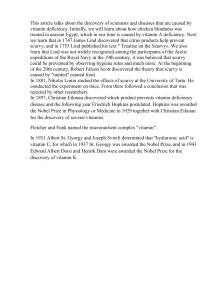


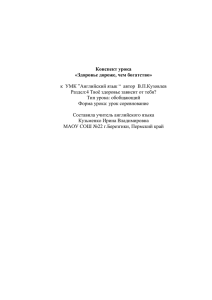
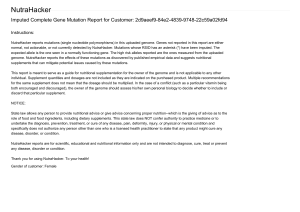
![ISSN 1561-6274. Нефрология. 2009. Том 13. №3. © Ì.Ì.Âîëêîâ, 2009 ÓÄÊ 616.61-036.12-008.9]:546.41+546.18](http://s1.studylib.ru/store/data/002088276_1-4bc2ed86dc4c87a6d852f5029de422b0-300x300.png)
